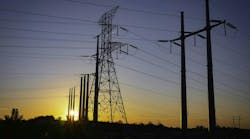The electricity consumption forecast for Finland for this winter is at the same figures as last winter, with peak consumption estimated to be 15,000 MW. Finland continues to be dependent on electricity imports. Electricity is imported from Sweden, Estonia and Russia to cover the shortfall of 1,700 MW. According to information compiled by the European transmission system operators, more and more countries in Europe also rely on imported electricity in peak consumption situations.
Industrial electricity consumption in Finland has declined slightly from 2011, but other consumption has risen correspondingly. There was a very cold period last winter at the beginning of February, during which period electricity consumption rose to 14,300 MW. The consumption forecast for the upcoming winter corresponds to the past winter. The maximum consumption is estimated to rise to 15,000 MW.
During peak consumption, the electricity production capacity in Finland is about 13,300 MW; the level of production has remained almost unchanged. A few small thermal power plants and power upgrades in some hydropower plants have been completed, but some of the older production capacity has been decommissioned. About 100 MW of wind power have been completed or is about to be completed, but the forecast presumes that this production is very small on a cold, calm winter day.
The import capacity to Finland from the neighboring countries is at the same level as in the previous winter with the exception of the Fenno-Skan 1 connection between Sweden and Finland. In addition, imports on Fingrid's transmission connections from the east have decreased considerably since last autumn as a result of the capacity fees introduced in the Russian electricity market.
There are also concerns over the security of electricity supply in Central Europe due to reasons such as a considerably smaller baseload power volume after Germany decided to close its nuclear power plants. Most European countries still have surplus electricity during peak load situations, but more and more countries, such as France, Denmark, Latvia and Poland, depend on imported electricity.
For more information, visit www.fingrid.fi.

